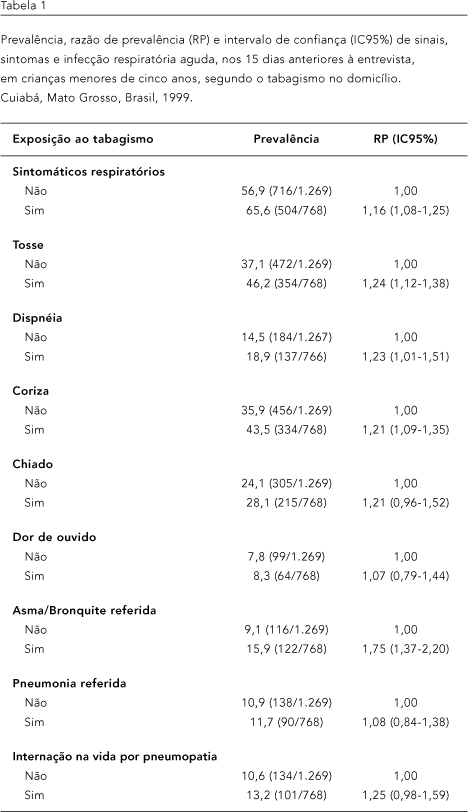Environmental tobacco smoke is an important respiratory tract irritant in young children. To identify factors associated with respiratory disease and determine the main source of smoking exposure in the household, a cross-sectional study of 2,037 children who were immunized in primary health care clinics was conducted (in a sample of 10 out of 38 clinics with 200 children each). Parents answered a questionnaire about children's birth, passive smoking, former and current respiratory morbidity, socio-demographic characteristics, and living conditions. Analysis was based on hierarchical logistic regression. Prevalence of respiratory symptoms was 59.9% for children who live with smokers. Asthma and bronchitis showed the strongest association with smoking. In multivariate logistic regression, the following variables remained associated with asthma/bronchitis: socioeconomic status (OR = 2.93; 95%CI: 1.57-5.45), maternal schooling (OR = 1.46; 95%CI: 1.08-1.98)] and occupation (OR = 1.68; 95%CI: 1.04-2.74), neighborhood (OR = 1.47; 95%CI: 1.06-2.02), child's age (OR = 3.38; 95%CI: 2.31-4.95) and sex (OR = 1.46; 95%CI: 1.09-1.94), breastfeeding (OR = 1.66; 95%CI: 1.15-2.40), and household smoking (OR = 1.58; 95%CI: 1.18-2.11). Children with lower socioeconomic status and exposed to household smoking showed increased risk of respiratory disease.
Tobacco Smoke Pollution; Child; Respiratory Tract Diseases





